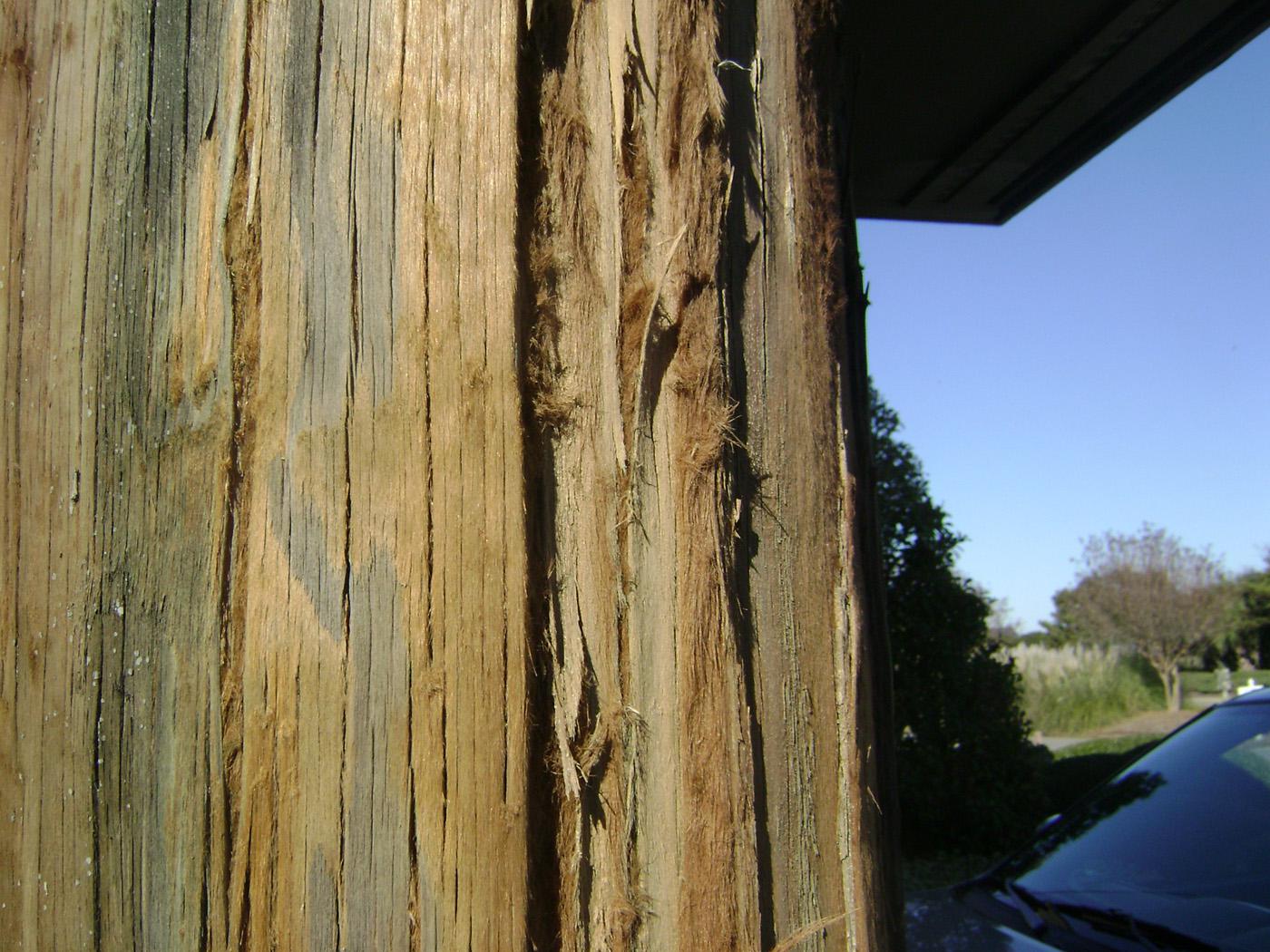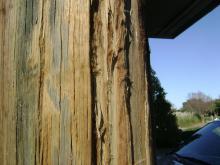Information Possibly Outdated
The information presented on this page was originally released on March 17, 2011. It may not be outdated, but please search our site for more current information. If you plan to quote or reference this information in a publication, please check with the Extension specialist or author before proceeding.
Preservatives help wood weather southern climates
MISSISSIPPI STATE – The climate of Mississippi and the Gulf South region presents challenges for wood preservation, making water repellents and the environment top considerations.
David Jones, assistant Extension professor in Mississippi State University’s forest products department, said wood treatments can lengthen the performance of timber by decades.
“If we placed an untreated telephone pole in the ground, it would last two or three years. Treated poles routinely last 30, 40, 50 or more years,” Jones said. “The time to consider treatments is before the wood is in place, especially if it will be in water.”
Mississippians use wooden pilings and decking extensively from the salt waters of the Gulf to the lakes, ponds and rivers throughout the state. Even away from bodies of water, the state’s humidity and rainfall can take a toll on the life expectancy of wood products.
“Wood can be degraded by a variety of factors including biological factors, mechanical means, fire, sunlight, and chemicals,” Jones said. “Biological factors cause the greatest financial impact and get the most attention. Wood rot, termites, carpenter ants, bees, wood-boring beetles and marine borers are the major organisms in this regard.”
Preservative treatments and techniques in general target these organisms and minimize their negative impacts on wood’s integrity.
“Preservative treatments primarily protect wood from biological organisms,” he said. “Some wood protection chemicals also act as water repellents. This water repellency helps protect wood from deterioration by limiting the amount of chemical that can enter or absorb into the wood.”
Chemical deterioration is much less common and is sometimes misdiagnosed. It generally occurs when high concentrations of chemicals come in contact with or become absorbed into the surface of wood.
Jones said high salt concentrations can degrade wood, causing a condition referred to as “salt kill”, especially in marine areas or where salt is used on icy paths. Water-borne preservatives that contain water repellents, such as wax, can help minimize the risk of salt kill.
“Table salt is a combination of sodium and chlorine. The chlorine in salt can slowly degrade wood,” he said. “High salt concentrations, high moisture levels or moisture fluctuations, and warm temperatures can accelerate the process.”
Exposure to mechanical abrasion, sunlight exposure, pressure washing and wave action can all accelerate the deterioration process.
“Chlorine is a natural pulping agent of wood. As salt accumulates, it often leaves a whitish, powdery residue on the surface,” he said. “The chlorine can get absorbed into the wood and soften the lignin, which is the glue that holds the individual wood cells together. The result is a fuzzy or stringy wood surface, and possibly a residue of wood dust or pulp.”
Jones said creosote or oil-borne wood preservative treatments, which are water repellent, can minimize this type of deterioration, but they are heavily restricted in water environments.
“Many people are surprised to hear that wood is generally far more chemically resistant than other structural materials, such as steel and concrete,” he said.
Rubin Shmulsky, head of MSU’s forest products department, said it is important to accurately identify salt-killed timber and to know the differences between it and wood that is biologically attacked.
“Have a professional, such as a treated-wood supplier, wood scientist, engineer or Extension specialist, look at the wood to advise what, if anything, should be done to address concerns,” he said. “Avoid getting advice solely from someone trying to sell a product or service. Remember that chemical impacts on wood do not need biological solutions.”
Once damage from salt is visible, it is nearly impossible to get a quality, lasting treatment to bond between a surface coating and a partially pulped wood surface. Also, salt water will continue to wick upward in the wood structure, and the pulping reaction can continue underneath the coating.
Creosote or penta-treated poles tend to be more resilient because those chemicals act as natural water repellents. In untreated wood or wood treated with water-borne preservatives, some level of salt kill is common especially after many years of service.
“Salt kill may be unsightly, but it is often not structurally harmful, and the wood could continue to perform for years or even decades. In each case, advice from a credible inspector is often money well spent,” Shmulsky said. “If removal of the fuzzy surface is desired, it may be sufficient to scrape off the salt-killed layer. Pressure washing should be avoided in these situations as it often makes matters worse.”
For more information on salt-killed wood, view the Extension publication online.



